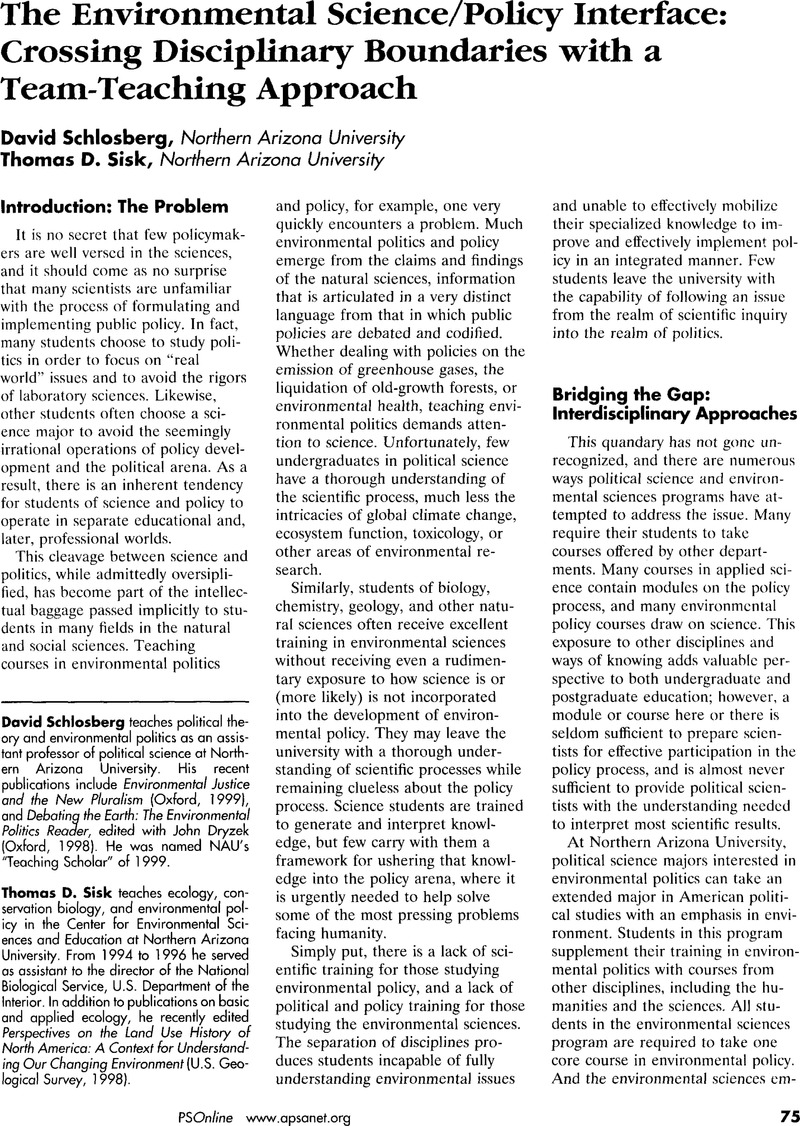Crossref Citations
This article has been cited by the following publications. This list is generated based on data provided by Crossref.
Alm, Leslie R.
and
Simon, Marc
2000.
Natural scientists, social scientists, and the environment: A cross‐border analysis.
Journal of Borderlands Studies,
Vol. 15,
Issue. 2,
p.
57.
Nobes, David C.
2002.
Building on the foundations.
International Journal of Sustainability in Higher Education,
Vol. 3,
Issue. 4,
p.
371.
Villanueva, Omar
and
Zimmermann, Kathryn
2020.
Transitioning an Upper-Level, Integrated Laboratory Course to Remote and Online Instruction During the COVID-19 Pandemic.
Journal of Chemical Education,
Vol. 97,
Issue. 9,
p.
3114.
Pollard, Jennifer R.
Michel, Jessica Ostrow
Simon, Adam C.
and
Shriberg, Mike
2023.
Team-Teaching as a Promising Pathway toward Interdisciplinary Sustainability Competency Development.
Sustainability,
Vol. 15,
Issue. 15,
p.
11534.



